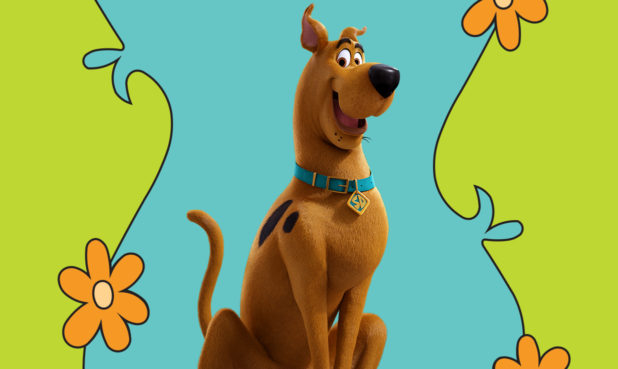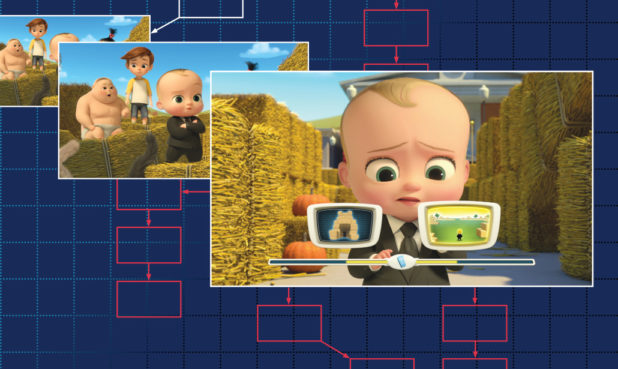When there’s animation, there’s action. Someone is fighting, chasing, fleeing, or getting into some kind of mayhem, often at breakneck speed. These scenes may look effortless, but if you’re going to construct a sequence that rises above the ordinary—say the artists and writers who traffic in these scenes—you’re going to need complicated characters placed in unfamiliar situations, a clear definition of what is at stake, some interesting props, careful orchestration, and plenty of foresight.
To elevate the action from great to awesome, you’ll need to think outside the box. Or in the case of Noëlle Raffaele, you have to figure out what’s actually inside the box.
During her work as a storyboard artist on The Lego Ninjago Movie, Raffaele worked on the showdown between Lloyd and the evil warlord Garmadon, who is also Lloyd’s father. Garmadon possessed the ultimate weapon; Lloyd was trying to get it back. The weapon was inside a box, which Raffaele and her team realized represented far more than just a container. That particular sequence took up eight different storyboard files based on changes in emotion within the scene.
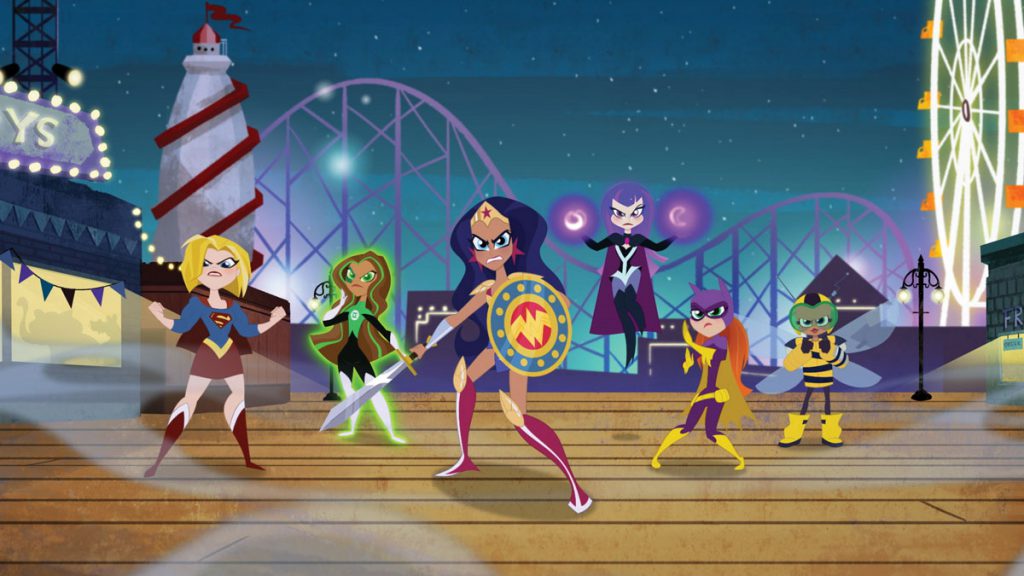
“Lloyd needs the ultimate weapon to fulfill his mission, but what he really wants is for his dad not to leave again,” said Raffaele. “So, we’re trying to get into the emotion of a fight. They’re fighting over the box, but the box is the thing that keeps them together.”
That box battle presented a classic conundrum. Storyboard artists and writers alike insist that no matter how eye-popping the action gets, an effective scene must know the “why” behind the action and keep it firmly in the characters’ sights. That tenet holds true whether someone is fighting a death match, fleeing for her life, pulling off a rescue cliffhanger or, yes, trying to wrest the ultimate weapon from his estranged father. Raffaele, who directs on DC Super Hero Girls, is often cutting through the mayhem to figure out a character’s motivation.
“I work with some very talented board artists and whenever I have an action sequence, they’re doing this amazing choreography,” Raffaele says, “but then I step back and think, ‘Wait a minute. What does Wonder Woman want in this fight? Why is this even happening? Why does the audience care?’ That’s what you should always be servicing.”
“An action sequence really should be thought of more as a sequence with action in it. The action is somehow advancing the story, expressing the emotional and thematic concerns.”

“An action sequence really should be thought of more as a sequence with action in it. The action is somehow advancing the story, expressing the emotional and thematic concerns.”
A Balancing Act
Determining the appropriate action-y mix can be a balancing act. On the one hand, if a character has super-cool powers, nobody wants to spend 22 minutes watching her playing chess. On the flip side, too much wall-to-wall “Wham! Bam! Kapow!” and you risk making your audience go numb. Artists who work in this medium have a term for that, too—action fatigue.
“Ironically one of the first concerns you run into any time you bring up the subject of an action sequence in an animated movie is, ‘Oh, we can’t do too much or there will be action fatigue,’” says Peter Ramsey, co-director of Spider-Man: Into the Spider-Verse. “An action sequence really should be thought of more as a sequence with action in it. The action is somehow advancing the story, expressing the emotional and thematic concerns.”
Ramsey recalls a climactic “Avengers-like” scene from his 2012 film Rise of the Guardians where the titular heroes, now stripped of their power, have to somehow stay alive until their powers are restored.
“I was kind of hoping that this would be a great chance to see them cooler than we’ve seen them in the rest of the movie already,” says Ramsey. “This is their ultimate expression in their belief of what was behind them. It’s about a fight, but it’s also about this team of characters who are kind of getting their groove back and becoming who they were meant to be.”
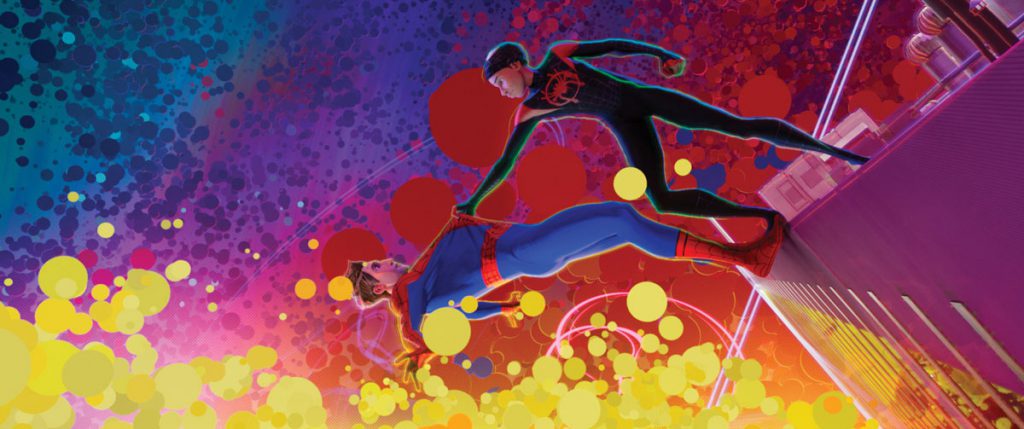
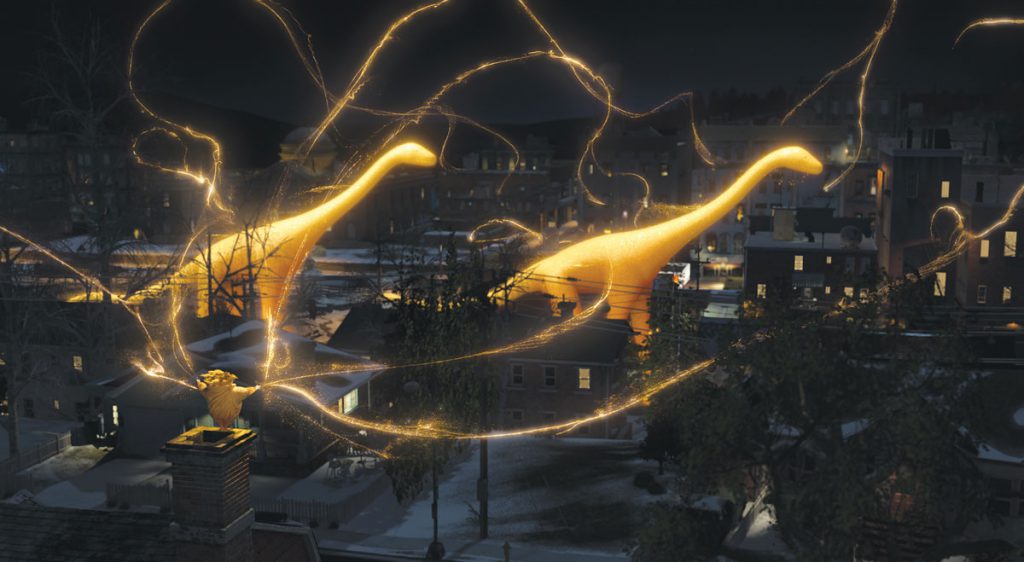
Guardians also featured a showdown between the Boogeyman Pitch and the gentle Sandman that involved a herd of nightmare horses and eventually sent Sandman up into the sky. With the heavens as their backdrop, Pitch and Sandman duke it out as a helpless Jack Frost tries to pull off a rescue.
“A lot of that became about lighting, about how do we work with the clouds to create this sort of canyon or mountain kind of atmosphere where they’re fighting,” Ramsey says, “and then to communicate the scale without losing the intensity of the moment. So it’s not just us watching tiny figures floating around in the air throwing stuff at each other. He’s reacting, and hopefully we’re reacting along with him.”
“I like my scripts to read as if you’re seeing the episode in real time, beat by beat.”
Beat by Beat
The greater the mayhem quotient, the more carefully orchestrated a scene needs to be. Greg Johnson, a writer and producer who has worked on several Marvel animated movies, is accustomed to deploying a large group of X-Men or MCU heroes into a giant battle, all the while remaining confident that the audience can keep up and stay engaged.
With a multiple-character battle, the beats need to be meticulously built into the script, Johnson says, so that if Captain America throws his shield, we can both see where it lands and track the characters over on the side. As a writer, Johnson says, he makes sure he knows where everybody is and where they will end up so it doesn’t look like “Armageddon on the page.”
“You don’t leave in the middle of something that makes it look like our hero is going to die,” Johnson says. “You resolve that little piece of business before you cut away so when you cut back, they can still be trading punches because that’s how you left them.”
“For me, the ‘timing’ of a successful action sequence is something more than just technical—it’s something that begins on the script page and follows through the storyboarding and directing process.” Duane Capizzi, a writer and producer on Carmen Sandiego agrees: “I like my scripts to read as if you’re seeing the episode in real time, beat by beat. Successful action sequences are orchestrated — they should rise and fall, have tension and release, not unlike music.”
“We try to do anything unexpected, put character first and avoid the pitfalls of boring kind of standard western action sequences.”
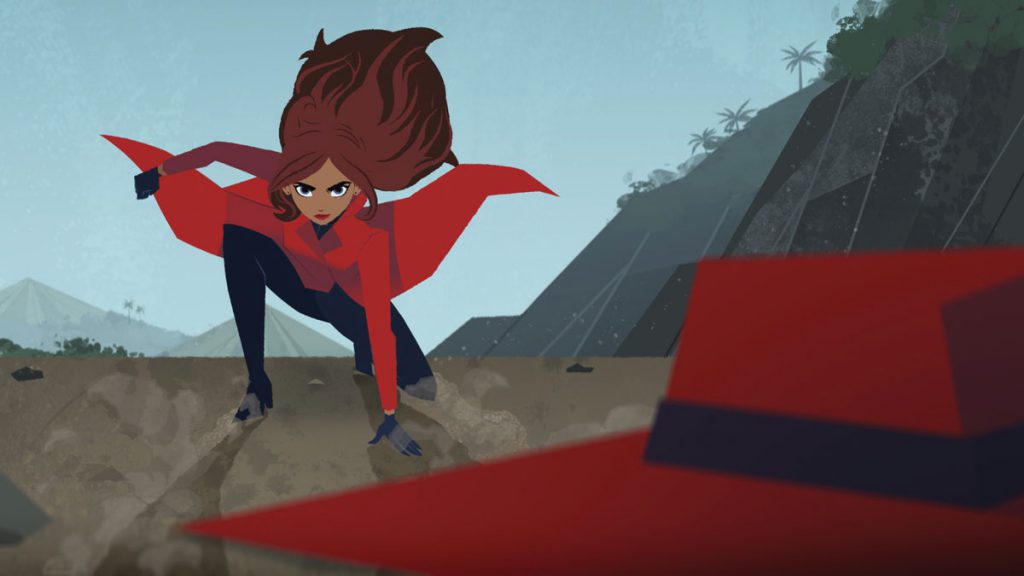
Building Character
As critical as plotting and timing are to the success of a sequence, artists and writers alike agree that much of action comes down to character. Even if you’re witnessing a familiar character taking on a familiar foe, the stakes need to be real enough to keep an audience invested.
Returning to or reimagining established heroes can pose a challenge which many artists say they are eager to embrace, especially in action sequences. In rebooting the Teenage Mutant Ninja Turtles for the 2018 Nickelodeon series Rise of the Teenage Mutant Ninja Turtles, co-creators Ant Ward and Andy Suriano crafted the fighting styles of Mikey, Donnie, Leo and Raph around individual personalities.
“We knew we wanted the action on the show to be totally different to some of the stuff that’s been done before in action shows,” said Ward. “We love going down like 15 mm and really warping the environment and playing with timing. And we have that sense of comedy in everything we try to do.”
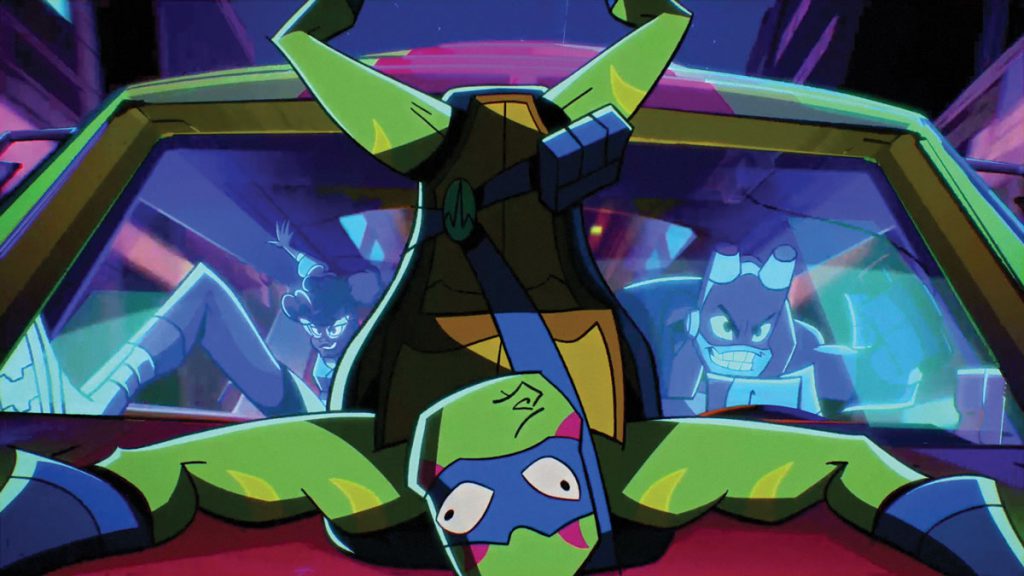
One might scoff at the idea that killer action must be “character-driven,” but Ramsey advises us to look to the web. At the heart of the climactic Spider-Verse showdown between Miles Morales and the Kingpin, it’s the other Spiders sacrificing themselves to keep the Collider from firing so Miles can prove himself that elevates the action.
“You don’t want to get to the Act 3 final battle—which every movie seems to have—and feel like ‘I’m not getting any new information. I’m not learning anything new about the characters,’” says Ramsey. “There’s always an emotional context and a character story that’s being told even if there’s constant kicking or punching.”
Over the course of a 30-year career in animation, Capizzi has crafted stories for Jackie Chan, the Transformers, Men in Black, the Gummi Bears and multiple characters in the DCU, to name a few.
He recalls a scene in the kid-friendly series The Batman that found the Caped Crusader facing the series’ first showdown with the Penguin in the bowels of the Cobblepot mansion. The scene’s creators knew that this would be the first of many Batman-Penguin salvos, but that this initial battle between two well-known characters needed to be memorable. The solution lay in having Batman and Penguin conducting their brawl around Batman’s trusty manservant Alfred, who was tied down in the middle of the floor.
“It gave the scene a dose of humor, a dose of fun and made it very memorable rather than just another punch out,” says Capizzi. “You’re always trying to figure out what’s going to make the scene memorable? Seventy-percent of the time, the answer is right there under your nose.”


